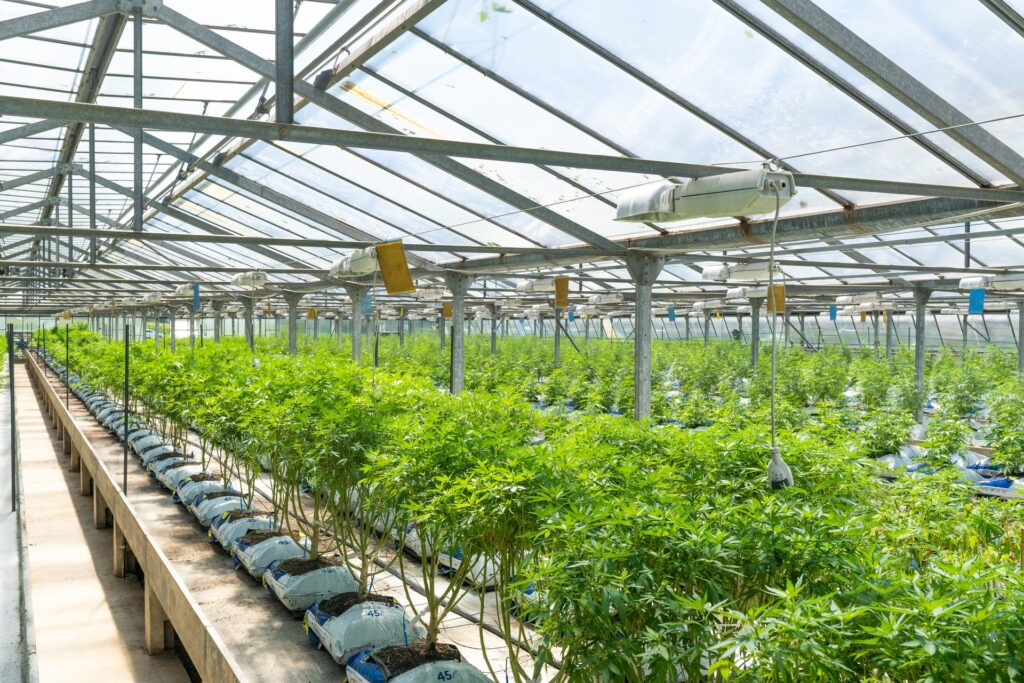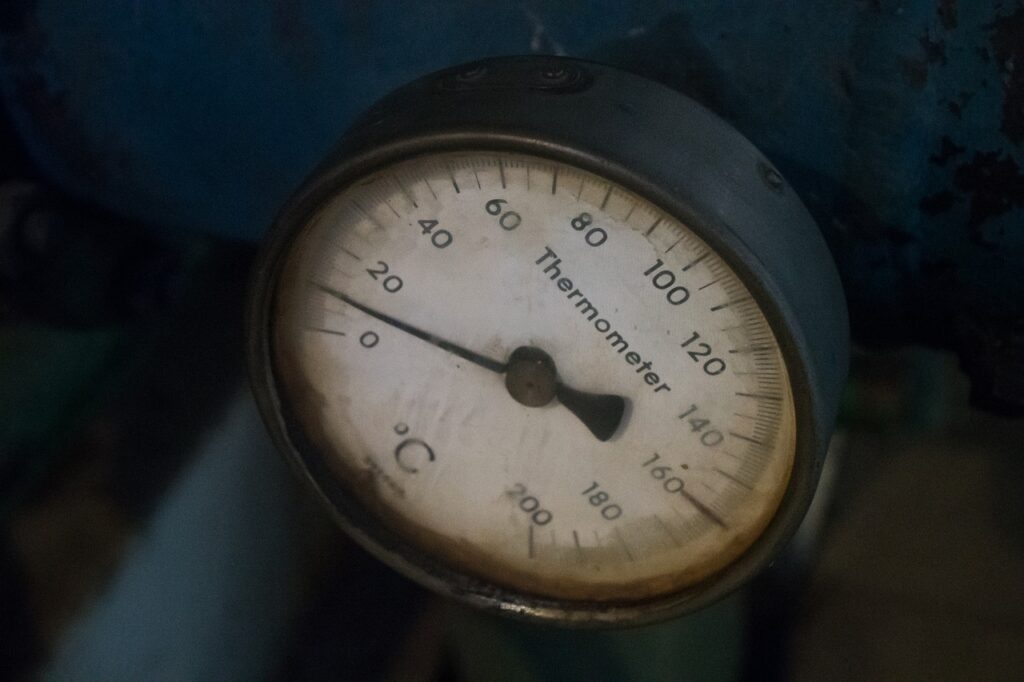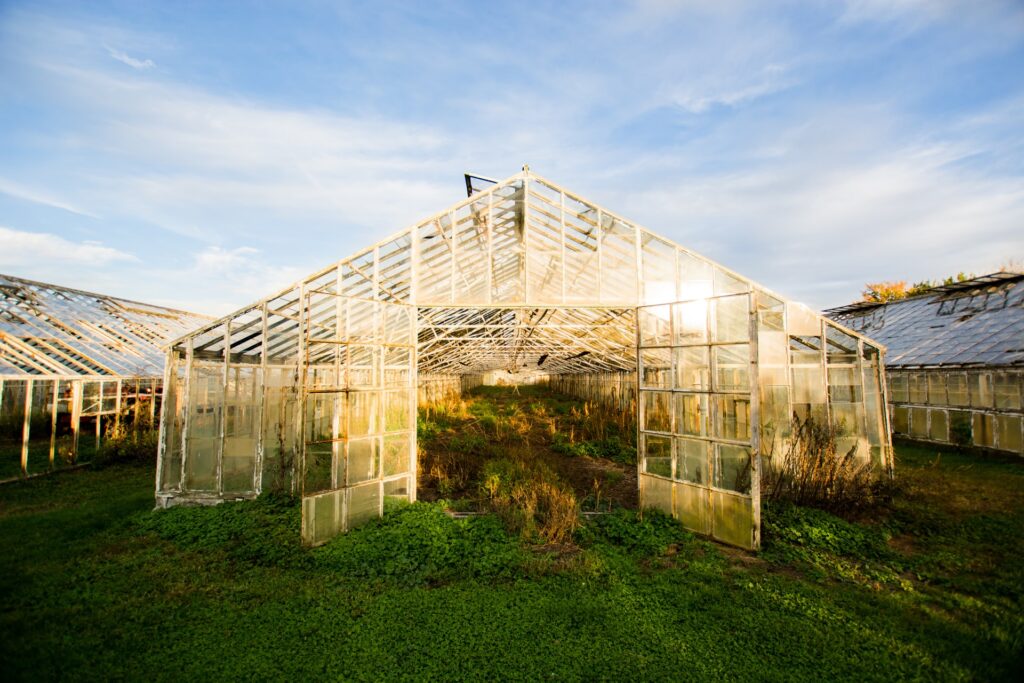Sealed cannabis greenhouses are an emerging trend that is growing in popularity among many cultivators.
Why?
The fact is, there’s a strong case for cultivating cannabis in a controlled environment. Also, as the need for sustainable growing becomes more pressing, the role sealed greenhouses play in helping ensure that sustainability is becoming more apparent as well.
Let’s break down what a sealed greenhouse is, its benefits, and what makes it a worthwhile investment.
Open vs. sealed greenhouse: What’s the difference?
Traditional “open” greenhouses are intensively ventilated. Using fans, air is constantly flushed out of the greenhouse, and fresh, outdoor air is introduced into the space to cool it down. But because open greenhouses have gaps and are “leaky”, this air exchange continues even when the fans are off.
Sealed greenhouses (sometimes called closed greenhouses), on the other hand, aim to significantly reduce or eliminate any air exchange. They require automated cooling and dehumidification systems to maintain optimal environmental conditions in the grow space. As such, a sealed cannabis greenhouse controls indoor environmental conditions with more precision compared to an open greenhouse.
But if both options work, why are sealed greenhouses gaining popularity?
Why invest in a sealed greenhouse?
Sealed greenhouses provide numerous benefits such as:
Pest, disease, mold and mildew control
The continual air exchange in an open greenhouse is great for keeping the structure cool, but it makes it difficult to prevent diseases, pests, mold and mildew from entering the space. Conversely, an indoor greenhouse is isolated from outdoor air, thus reducing exposure to contaminants and diseases. Although monitoring for pests, mold and mildew is still critical in a sealed greenhouse, the environment is more controlled and reduces pests compared to an open greenhouse.
Product consistency and increased harvests

In an open greenhouse, product consistency is hard to maintain. Variances in weather conditions, pathogens and pests can all lead to inconsistencies in crop and harvest quality. Such conditions can even result in a complete crop loss and they create uncertainty that can make or break a cultivation operation.
A sealed greenhouse, in contrast, provides the benefit of tightly managed climates — this helps in the consistent production of a high-quality crop. Not only does product consistency ensure that cultivators can project harvests and revenue more accurately, but it also ensures repeat business and sustainable business growth.
Another issue with cannabis production in an open greenhouse is the fact that production usually stops during those times of the year when temperatures are too high or when it’s too cold. This often creates reliance on a single harvest for income; an approach that carries a lot of risk.
Although a sealed greenhouse won’t completely eliminate the risks associated with cannabis production, it reduces them dramatically. A sealed greenhouse means a controlled environment in which cultivators can enjoy a well-managed production schedule and more harvests in a year. Instead of relying solely on nature for product quality and volume, cultivators have more control over their grow environment, and with that, their ROI and success.
Improved energy efficiency
Since they are leaky, open cannabis greenhouses require more energy for heating and cooling. This leads to inefficient energy consumption and higher energy costs. Energy costs already make up a significant part of the total operating costs in cannabis production, and this cost is exacerbated in an open greenhouse.
A sealed greenhouse has limited openings and better insulation. This translates into more efficiency when it comes to heating and cooling, and ultimately, lower energy costs.
Odor control
The issue of odor has always been a big one in cannabis operations, especially in urban areas where there’s strict regulation surrounding odor control. In traditional open greenhouses, cultivators have to add carbon filters to fans to reduce odor. However, this is very inefficient and increases operating costs since creating sufficient air exchange is more difficult with filters, and said filters have to be replaced regularly.
A sealed greenhouse minimizes air exchange, thus containing air inside and substantially resolving the odor problem. Although cultivators will likely still require some backup fans with carbon filters, closed greenhouses reduce reliance on the filters, plus they are a cheaper and more effective way of dealing with cannabis odor.
Preventing cross-pollination
Normally grown in open fields with pollen that can travel over long distances, hemp is fast becoming a common biological contaminant in the cannabis space, particularly in open greenhouses. Cross-pollination with hemp results in “seeded” or “hermaphroditic” cannabis, which although still technically cannabis, loses most of its value and cannot be sold directly to consumers.
Cross-pollination, for example, can lead to fewer and smaller buds. One study even found that cross-pollination decreases the yield of essential oils in cannabis flowers by over 50%. Put simply, cross-pollination can lead to some major losses.
Sealed greenhouses reduce the threat of cross-pollination to negligible. They ensure the full value of the final product and make a cannabis operation more likely to succeed.
More efficient use of CO2
Supplementing CO2 to increase yields is a growing practice in cannabis operations. However, in open greenhouses, much of the added CO2 is expelled outside during the day, essentially resulting in some large losses. Because sealed cannabis greenhouses retain air inside the greenhouse, they are more efficient and cost-effective at maintaining CO2 levels.
Does a sealed greenhouse have drawbacks?
A sealed greenhouse does have a few limitations.
The risk of excessive heat and humidity

With the wrong cooling system, sealed cannabis greenhouses can become excessively hot and humid — the perfect conditions for pests, diseases, mold, and mildew to thrive. What’s more, dehumidifiers, the standard go-to for maintaining the right humidity levels, are too energy-intensive to rely on all the time.
But all these problems mostly exist when growers have the wrong cooling and dehumidification system. Advances in climate control systems mean growers can now accurately regulate temperature and humidity in a closed space, and optimize the environment, all without reducing energy efficiency or increasing operational costs.
Higher investment requirement
Even though sealed cannabis greenhouses offer various benefits and control, they do require more specialized environmental control systems for heating, cooling and dehumidification. The investment required for such a system is high compared to the ventilation system required in open greenhouses. Nonetheless, if you can afford the initial investment for a specialized HVAC system, sealed greenhouses offer benefits that far outweigh any downsides.
With so many things to consider, how do you know when it’s time to invest in a sealed greenhouse?
When to consider a sealed greenhouse?

The concept of a closed greenhouse is all about achieving efficient and controlled indoor growing, so you may want to consider it if you want a highly controlled environment.
Controlling your environment with precision
A sealed cannabis greenhouse gives you the best of both worlds — all the benefits of a conventional greenhouse, plus the more precise and efficient environmental control of an indoor grow room. It also reduces any biological contaminants from entering the space. As such, a sealed cannabis greenhouse will help ensure quality crop and business growth.
Furthermore, you may want to consider a sealed greenhouse if you are facing the challenges of poor odor control and/or cross-pollination.
More efficient odor control
As previously mentioned, sealed greenhouses are great for cost-effective odor control, specifically in tightly regulated areas.
Better crop protection
Again, a sealed greenhouse provides superior crop protection from cross-pollination compared to open greenhouses.
Getting started: Retrofitting your open greenhouse
Wondering where to begin with setting up a closed cannabis greenhouse?
The good news is that reaping the benefits of a sealed greenhouse doesn’t mean ditching your current space and restarting from scratch. You can retrofit your existing open greenhouse into a sealed greenhouse, with the help of grow space design experts.
Retrofitting your open greenhouse involves sealing the space from outside air to produce an indoor growing environment that gives you an edge in the competitive cannabis industry. One of the benefits of retrofitting your open greenhouse with the help of experts such as the Harvest Integrated team is that the team is familiar with specialized solutions for the cannabis industry.
For example, Harvest Air allows growers to use the outside air to cool and dehumidify the grow space without bringing the outside air — and all of the associated risks that come with it — into the space. This allows growers to enjoy the many benefits of a closed greenhouse, e.g:
- reduced risk of pests, pathogens, and mold
- easier and more efficient maintenance of CO2 levels in the space
- higher product quality and yield
All this, without breaking the bank on utility costs.
The rise in demand for cannabis is expected to continue, but consumers are interested in high-quality cannabis. A sealed greenhouse is indispensable; it can be the factor that determines how good your crop is and how successful your operation can become.
Got questions or want to know more about how you can transform your open greenhouse into a sealed greenhouse? Contact us today!